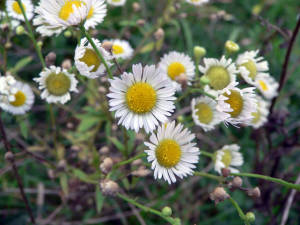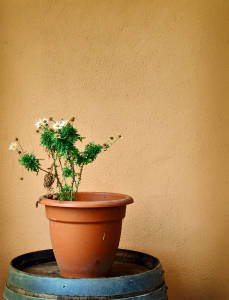Chamomile grows in the wild across many continents. It is most frequently used in tea, with the belief that it helps to resolve mild ailments such as the common cold. While this remains unproven, it does appear to aid mild stomach complaints.
I love to drink chamomile tea during winter. It has a very mild sedative effect that makes it the perfect before-bed drink.
How To Grow Chamomile
There are many varieties of chamomile, including Roman, Double-Flowered, Treneague, Dyers and German. Only Dyers, Roman and German can be grown from seed. The others will need to be grown from cuttings of established plants. German and Roman are by far the most popular types of chamomile and come recommended for backyard growers.
If growing from seed, sow seed on a seed or plug tray on the surface of the soil. Provide heat to the tray if necessary such that the soil temperature is around 19°C (66°F), and keep the soil moist. From here, the seedlings can either be potted on to individual pots or transplanted in to the garden.
When transplanting to the garden, plant the seedlings about 12 inches apart (30cm). Ideally they will receive lots of sun. Transplantation should happen after the final frost of winter, as they are not a frost tolerant plant. They also do not like temperatures above 37°C (100°F), so be wary during summer in hot environments.
Chamomile needs a weekly water and benefits from one dose of liquid fertilizer once established.
To grow from cuttings, take about 4 inches of stem tips and plant just below the surface of the soil.
Growing Chamomile In Pots
Chamomile grows well enough inside, so pots are a feasible option. If you’re planning to grow chamomile in containers you may as well sprout your seeds in their final pot rather than starting in a seed tray. Chamomile can brighten up a room with its daisy-like appearance.
Be careful to provide Chamomile enough sunlight. If grown indoors it basically needs the full day worth of sunlight. If possible, let the plants spend time oudoors in sunlight during the day. Be wary that chamomile grows up to two feet tall, which may be too large for some areas such as balconies.
Harvesting Chamomile
Chamomile leaves can be picked at any time. They will taste best if picked during the spring and summer (if planted in early spring as recommended). The leaves can be used fresh or dried.
Flowers should be picked when fully open, which typically happens during summer.
Chamomile is an annual plant, but it self seeds easily. If you want a continuous supply of chamomile, simply let some flowers go to seed.


